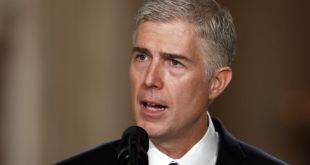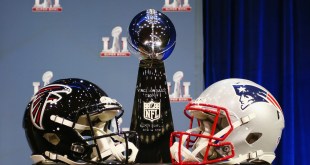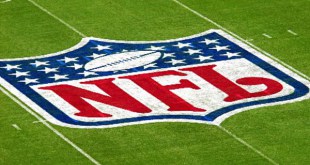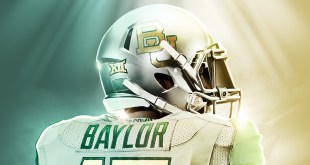Recently, many have torched the NCAA for its treatment of incoming freshman student-athletes and how their initial eligibility is approached, with particular scrutiny on Kansas’ high-profile basketball recruit Cheick Diallo (still ongoing).[i] Initial eligibility is designed to ensure incoming student-athletes are prepared for the rigors of college coursework combined with participating in college athletics. A high school athlete must: (1) graduate from high school, (2) have 16 core courses, with a set breakdown of the courses being from certain areas, and (3) have a core course GPA (derived from those 16 core courses) that corresponds with a matching (4) SAT or ACT score.[ii] If a student does not meet these criteria, they have to sit out a year as a nonqualifier, with no practice, competition, or financial aid. Many situations lead to partial qualifiers where a freshman student-athlete can at least receive financial aid or practice with the team. These rules are designed to help college freshman athletes better adapt to the change of college coursework before having to run the full gamut of class, practice, and competition on competitive teams. For the overwhelming majority of incoming freshman student-athletes, academic (and amateurism)[iii] certification is easy and painless, but for the few outliers, the initial eligibility process can be a nightmare. While initial eligibility is still necessary, a few simple changes in the way the NCAA approaches this process can improve academic certification for everyone.
Initial eligibility is a good idea in principle that currently faces a few significant flaws. High school athletes are encouraged to register with the NCAA Eligibility Center in their junior year, and submit their transcripts and test scores as soon as they can. Realistically, many students do not even take an SAT or ACT until late junior or even senior year, so by the time they can get significant feedback on their eligibility, they are already running out of time to correct any deficiencies. In addition, when the NCAA starts asking for items to supplement the basic transcripts/test scores (and amateurism information), the student-athlete may not always be in the know on what is really being asked of them.[iv] The entire process is especially hard on internationals, who have to jump through a few extra hoops to accomplish what domestic high school students can do quickly and easily.
The Problems With the NCAA Governing Initial Eligibility
In a letter to the NCAA, Kansas Athletic Director, Sheahon Zenger, blasted the NCAA’s role in Cheick Diallo’s ongoing eligibility process. Many points are brought up, the most important of which is the NCAA’s interactions with and “control over” a high school. Zenger made particular note of the fact that the NCAA has not visited or made contact with the high school to address issues (especially when the high school is under added scrutiny from the NCAA).
The NCAA’s main drawbacks are once again a lack of subpoena power and manpower. First, the NCAA has no control over a high school. High schools complete these requests from the NCAA at their whim.[vi] Yes it benefits the students, but there is nothing requiring a high school to do this, nor is there any punishment to the school for not complying.
Second, the NCAA is comprised of two divisions that undergo initial eligibility certification with approximately 650 schools fielding teams in over 30 sports. With several hundred thousand student-athletes, somewhere around one-fifth to one-fourth of them in any given year are incoming freshmen (taking into account fifth year seniors and graduate students). The NCAA Eligibility Center processes anywhere from 40,000 to 80,000 initial eligibility certifications each year. The NCAA national office in its entirety has 300-500 employees, and the Eligibility Center is not even half of that staff. Zenger acknowledged this fact, and likely answered some of his own questions:
I acknowledge the work NCAA staff has done relative to Cheick, and while NCAA staff has many athletes like Cheick in similar situations, the University of Kansas has only one ‘Cheick’ situation – a situation where tremendous resources, time, and money have been expended.
For 40,000+ incoming freshman, it is probably safe to assume that there are at least several hundred (if not a few thousand) cases like this that the NCAA goes through each year. More work for me, but yes that is what schools have compliance offices around to do. Initial eligibility is a time-consuming job on campus, and for individually difficult situations like Diallo’s, there are people on campus to step in and do what the NCAA does not have enough staff to do: singularly address the needs and outstanding requirements of these freshmen still awaiting final academic certification.
What Zenger is really referring to is that the NCAA has input this system, and it affects students, but more outreach must be done to fully utilize the system. Yes, the NCAA performs high school outreach on the macro level annually. The NCAA has reached out to high schools on individual cases recently (suggesting core course list updates, requesting information, etc.).[vii] The burden of investigation falls heavily on the institution, this is where Zenger wants more participation from the NCAA. NCAA participation is a great necessity, especially for schools with less resources than Kansas.
The Biggest Issue – The Core Course System
Core courses come from a high school registering with the NCAA Eligibility Center and submitting a list of the courses with ample documentation. This can include a syllabus, assignments, tests, and anything else that shows the curriculum and how the course is taught. High school students have no control over this list, only what courses they take, or are instructed to take. Freshman in high school typically don’t have the wherewithal to look four years ahead and think, “maybe I should look at the NCAA Core Course list for my high school to make sure my classes will count towards eligibility.” Counselors in high school are typically not proactive enough with freshman to do the same.
Most high school athletes are encouraged to submit a six-semester (freshman through junior year) transcript. As with waiting to take the SAT/ACT until junior year or later, this does not offer much time to correct any deficiencies. Trying to make up for anything over the course of three years, while at the same time still fulfilling senior year requirements, can be difficult, if not impossible. This fact is compounded by a new requirement for any freshmen entering after August 1, 2016 that mandates 10 of the core courses be done by the end of junior year. While a high school can add a core course and have it retroactively count if it meets the criteria, anyone who doesn’t have the 10 courses complete automatically loses competition in their first year on campus.
Additionally, as with social media and recruiting, the NCAA rules do not adequately keep up with the times, and any nontraditional courses (especially online courses, but pretty much any coursework not taken at the student’s attended high school) are scrutinized even more than the regular high school courses. Online courses are becoming a fact of life, and are even a requirement in Florida now. The way the NCAA currently evaluates core courses makes it more difficult for these courses to count (not impossible, but certain frequently used online and credit recovery programs currently do not count). The easy answer is “well high school students and their counselors can go look at their core course lists anytime.” The easier response is they simply do not know that they need to be monitoring this from day one of their high school freshman year.
Internationals Have it Worse
The flaws in the initial eligibility process are exponentially exacerbated with incoming freshmen from other countries (or who at least during part of their four-year high school career were overseas).[viii] Not only do they have to submit all transcripts in both English (certified line-by-line translation) and native language, it also must be mailed properly (as in, not scanned, emailed, or faxed, which would all be much easier, cheaper, and less time consuming).[ix] These documents have to be sent in the mail because the NCAA has identified characteristics from official mailings – stamp, envelope, postmark, etc. – that help authenticate the material (think how any official transcripts in the US are sent). While the NCAA does not strictly govern core courses abroad, they have identified basic requirements from each country that need to be met (found in this handy 245-page international guide!).
Split files (some high school completed abroad, some high school completed in the United States) are usually more complex. Once a high schooler comes to the United States, one major problem can occur that is completely outside of the student’s control. The American high school can decide that a few courses were not completed at a satisfactory level, or worse, worried that the student is not as strong, the school could institute a reclassification and require a grade to be repeated. Theoretically this is not a huge issue, it helps ensure that students are best prepared for the next level. Under the initial eligibility process; however, this can be a disaster. Repeated courses cannot count more than once if a student is forced to retake Geometry for example. But if a school decides that a student needs to repeat their sophomore year in the US, not only does that student only get credit once for potentially 2-6 repeated courses, but the four-year time limitation to complete 16 core courses isn’t paused or changed. Bylaw 14.3.1.2.1 lists core curriculum time limitation as the expected date of graduation, based on entry into 9th Grade. This means four academic years after entry into 9th grade, 16 courses better be complete regardless of other circumstances. The student gets a double whammy of losing repeated courses in one of four years as well as the sudden fifth year of high school that won’t be used for eligibility purposes.
How to Fix the Flawed System
As with many NCAA problems, I believe the system is flawed, not broken beyond repair. The NCAA has looked at its academic misconduct policies in the wake of scandals like at UNC, and has ceded control to finding academic improprieties to universities before making any judgments. Jay Bilas, potentially the NCAA’s most outspoken critic, did get this one right:
NCAA Prez says it’s not NCAA’s role to tell colleges what “a course has to be”: https://t.co/vTHOxmGskY Yet, NCAA tells high schools?
— Jay Bilas (@JayBilas) November 16, 2015
Instead of submitting core courses one-by-one, submitting all the documentation, and curricula to go over from several thousand high schools around the country, let the high schools just submit their courses and take them at face value. If a student gets credit for English, and that is enough for graduation for the high school, district, and state, then that course is a core course. There is still documentation to keep, and there is still initial eligibility to certify, but there is no disconnect between a high school and the NCAA, which are two unrelated parties in the first place.
This may put a slightly larger onus on districts or states to corroborate what classes can be required (some sort of documentation still needed of course), but takes the NCAA out of that equation. With each student, along with sending a transcript, the NCAA could request a simple form or code on the transcript that says “yes this class was required as a part of this student’s graduation from this high school.” That sounds like a much simpler core course than worrying about if the high school changed a course title or the way they teach a course, and suddenly has to jump through all of the hoops again just to make Freshman English count.
A high school can update the NCAA with any courses that suffice for graduation and that’s the final answer, no questioning. If a high school is under some state or district review then by all means go into more detail and evaluation; otherwise, the burden on the NCAA staff should be reduced and the burden on high schools to prove a course is reduced. Leaving the sliding scale and the sixteen core course requirements in place (including the breakdown of what subjects the courses are in) will still flag the prospects that aren’t equipped to handle the rigors of being a student-athlete.
As a slight aside, if an incoming freshman is a nonqualifier, they cannot practice, compete, or receive athletic aid. I understand competition (let them focus on school), and practice to a lesser extent, but let a nonqualifier at least receive financial aid. If a school is recruiting a kid and they really want to spend their money on that kid that won’t play for a year, that’s their problem. Not allowing practice helps a high school athlete transition to college academics, but does not adequately set them up to succeed by going from no practice or completion and school to all of the above. Additionally, not allowing practice isolates the student from the team and coaches that played a significant part in their college choice, and further deteriorates their quality of life in an already new environment. A system that allows financial aid and at least some practice[x] would better support a high school athlete transition to being a successful college student-athlete instead of throwing them in the deep end suddenly in sophomore year.
Initial eligibility is still necessary to further the NCAA’s purpose. Eligibility requirements were imposed in the first place to prevent “ringers” from being used in late 1800’s rowing contests between schools and evolved from there. With the NCAA’s current emphasis on “student-athlete” in light of current lawsuits, initial eligibility shows that the academic focus is at the forefront from the start. Not only does it keep that idea in mind for their ideal public image, but providing a smoother transition for less-prepared student-athletes helps them succeed in college. Some may say the Division III method is the way to go, where schools do their own eligibility (essentially admissible is eligible). Looking at the real world view, this could cause less parity between schools at the Division I and II levels, as schools with lower standards could get more in. This would also put additional pressure on admissions offices to have some loopholes for coaches when they needed them. The more money involved (much more in Division I than Division III), the more incentive to break rules to get a leg up on competitors.
People claim that due process is violated by the NCAA’s de facto guilty until proven innocent policy. What no one really admits here is the fact that as a private entity, the NCAA is not included among those parties that must give due process. The real issue is what is still out of the hands of the student-athlete in many cases. What courses the NCAA accepts from a high school is not in a student’s control. Their grades, test scores, and ensuring that they take the required classes for graduation, are very much in a student’s control, and place a better emphasis on their well-being in the initial eligibility process. If the NCAA gets out of approving a high school’s core courses, and takes the high school at its word, then they can focus on the more important aspect of ensuring a prospective student-athlete is academically ready to succeed at the next level.
[i] Looking at you, Jay, with a few of many tweets as examples. But saying that someone has proven themselves by being in their first full-time semester after completing summer school is a flawed argument. Small sample size. Can’t say that 6 summer hours complete means someone has proven ready for a full-time, 12-hour semester with their sport in season. That’s like saying this .400 hitter through 3 games is going to win the batting title.
[ii] For a more complete breakdown of initial eligibility requirements, including core course breakdown and the Sliding Scale that matches core course GPA to test scores, look here.
[iii] I may mention amateurism a few times, but this is solely on academic certification. I only mention it because when a prospect registers with the Eligibility Center, amateurism questions are part of the overall process.
[iv] Imagine filling out the wrong form or submitting the wrong information if it isn’t clear what’s being asked for.
[v] From the Our Savior New American School Core Course List: “This program is under an extended evaluation period to determine if it meets the academic requirements for NCAA cleared status. During this evaluation period, the courses listed below may be subject to further review on a case-by-case basis, which will require additional academic documentation.”
[vi] I have literally waited months for a high school to update one course on their list.
[vii] From recent experience, I believe this trend is increasing to more day-to-day needs.
[viii] Contrary to popular torch-wielding belief, no the NCAA does not care about foreign 6th grade courses. While it is still harder for internationals to turn in documents, they only look at high school courses.
[ix] They are pretty strict and incredibly nitpicky on how these documents are accepted.
[x] If the rule was somehow limited practice, that would be nearly impossible to monitor if not enforce on a regular basis.
 The Sports Esquires Putting Sports on Trial
The Sports Esquires Putting Sports on Trial




